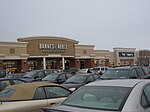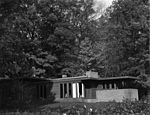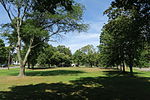Hampshire Mall
Buildings and structures in Hadley, MassachusettsShopping malls established in 1978Shopping malls in MassachusettsThe Pyramid CompaniesTourist attractions in Hampshire County, Massachusetts

Hampshire Mall is a primarily one-story shopping mall with a small second floor in Hadley, Massachusetts, United States, with approximately 30 stores owned by The Pyramid Companies. Current anchor stores include Dick's Sporting Goods, JCPenney, PetSmart and Target. The mall is home to Interskate 91 North, a roller skating rink on the second floor. Attached to the skating rink is LaserBlast: Ancient Adventure (a Lasertag facility that was formerly home to LaserStorm).
Excerpt from the Wikipedia article Hampshire Mall (License: CC BY-SA 3.0, Authors, Images).Hampshire Mall
Russell Street,
Geographical coordinates (GPS) Address Phone number Website External links Nearby Places Show on map
Geographical coordinates (GPS)
| Latitude | Longitude |
|---|---|
| N 42.356388888889 ° | E -72.547777777778 ° |
Address
Hampshire Mall
Russell Street 367
01035
Massachusetts, United States
Open on Google Maps








